The tractor is one of the first pieces of equipment that farmers purchase. Whether you’re on a small homestead or a large farm, the tractor is a versatile vehicle that gets the job done. They’re durable and offer the high level of performance most farms need.
That said, all tractors aren’t the same. Different tractors are designed to accomplish specific tasks on the farm.
They handle everything from digging large holes to lifting heavy loads. In addition, farmers use tractors to mow field edges, cut grass, and pull wagons.

Since the 1800s, the tractor has been a mainstay on farms across the United States. Heavy tractors are ideal for large farms, while smaller tractors are better suited for homesteads and small farms.
Here are some of the most popular types of farm tractors available today and how they’re used. Modern tractors have features that make them the best at what they do!
Table of Contents
1. The Garden Tractor
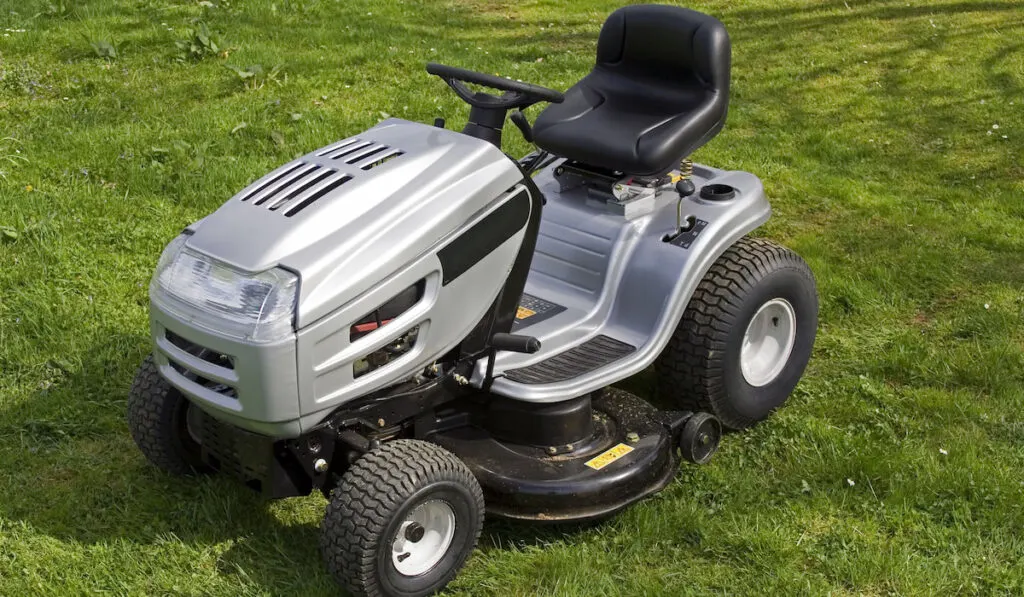
Garden tractors are the smallest type of tractor on this list. These small vehicles typically have around ten horsepower, and they’re used for small tasks and chores around the farm.
For example, individual farmers usually have garden tractors to mow the grass or prep areas to prepare them for planting a garden.
If you’re looking for a garden tractor, you’ll have plenty of choices. Right now, there are well over 100 models of garden tractors, all with various performances, sizes, and attachments.
You’ll need to research what manufacturer and model will suit your needs best before you buy.
2. Orchard Tractors
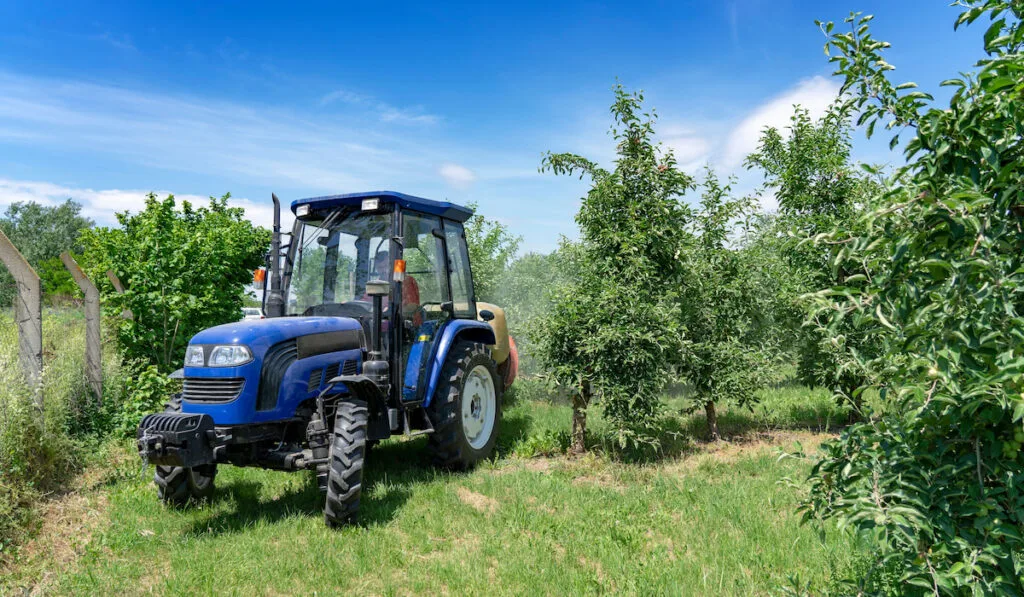
Orchard tractors are smaller tractors designed to make tending to orchards easier. An orchard tractor generally sits higher than other tractors, so farmers can observe and work in their orchards better. Also, if you’re sitting higher up, you can get to fruit, nuts, or problems in trees more quickly.
Many times, farmers will pull a wagon with their orchard tractors to harvest fruit or whatever else they’re growing. You also avoid walking through the thick brush on the ground or dealing with thorns in blackberry bushes, for instance.
3. Utility Tractors
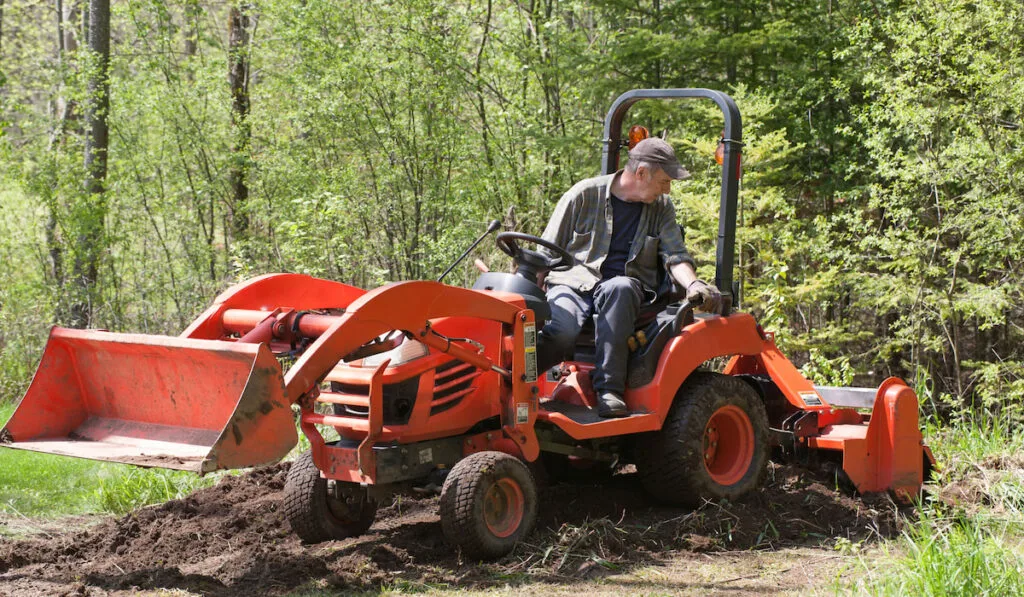
Utility tractors are the all-around multi-use tractors you’ll find on farms across America. These mid-sized machines have many attachments to help farmers handle regular tasks and one-off projects.
The utility tractor is used for things like pulling loads and cultivating. You won’t usually find them on small farms or homesteads, but they’re a great starter tractor for people who have larger plots or want to start farming on bigger tracts of land.
This is a good compromise for farmers who only have the budget to buy one or two farming vehicles. If they can’t afford specialty equipment, they can buy a utility tractor with some attachments to get the job done.
4. Implement Carrier Tractors
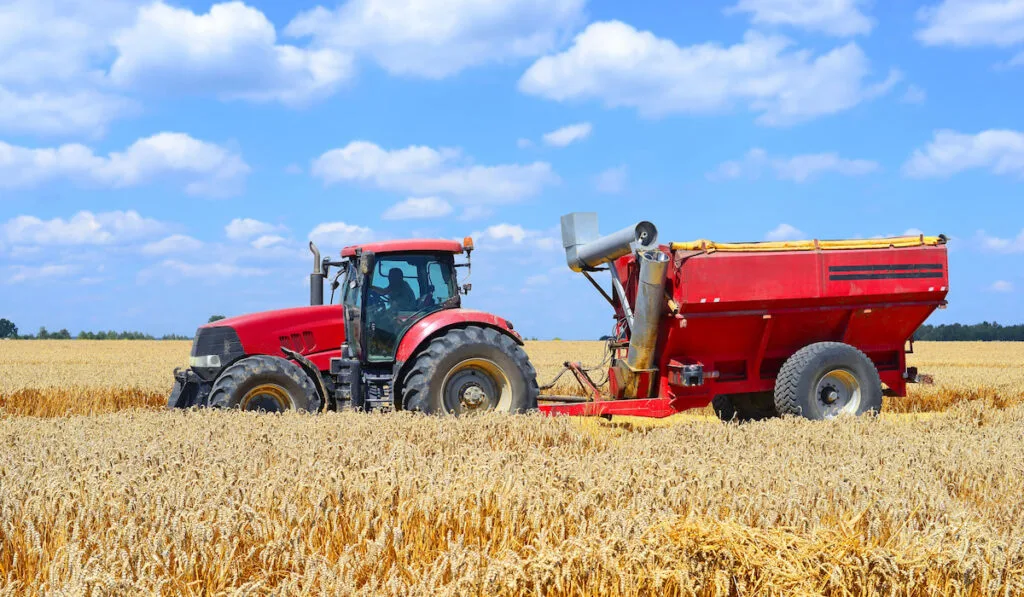
Sometimes a tractor is only necessary because it must pull a large implement for specific farm tasks. For example, larger farms save a lot of time and money by using specialized equipment that works faster. Rotary sweepers, drills, plows, and other implements are examples of things tractors pull.
A carrier tractor usually has an extended chassis between the back and forward tires that helps them pull larger attachments. These tractors come in varied sizes and are related to the size of the implements they pull. So, larger farms will need bigger implement carrier tractors and vice versa.
5. Backhoe Loader Tractors

These are the ultimate farm working vehicle. For example, a backhoe loader has a front-end loader on one side and a digger on the back. You can use these for various projects like shed construction and fence installation.
This is one of your best options when you need a working vehicle to do landscaping or dig manufactured ponds on your farm. These are also strong enough to break rocks or asphalt when you need to make adjustments to roads on your property.
6. Row Crop Tractors
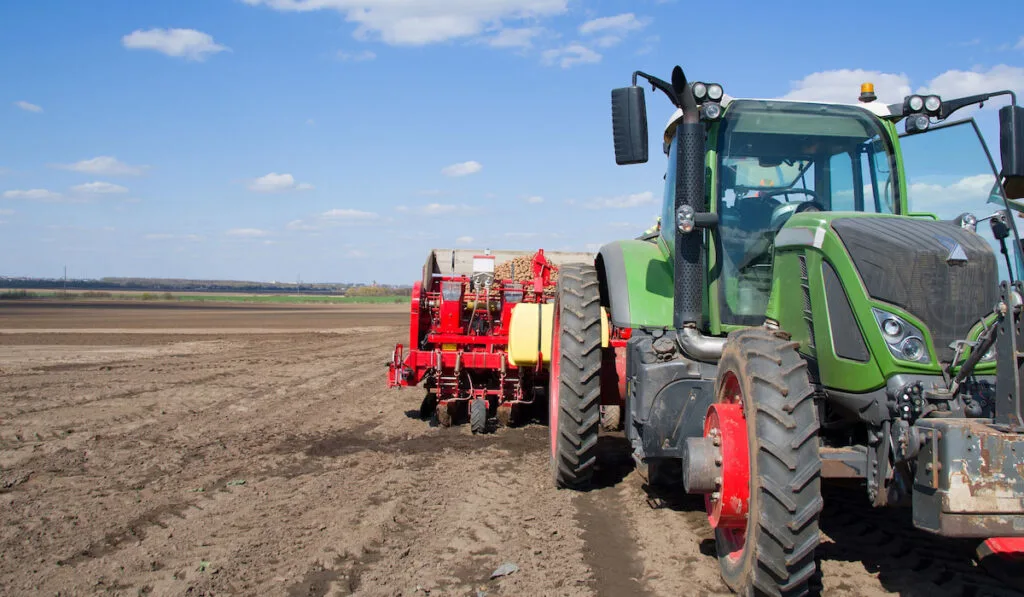
Row crop tractors come in handy for farmers planting crops in rows. The height and size of the tractor make it easier to view the pasture when you’re working. They also come with plenty of attachments that make plowing, leveling, and removing weeds more efficient.
Modern row crop tractors have features that allow users to program where they run, so you only need to enter what you want, and the onboard computer takes care of the rest.
This is another great choice for farmers who can only buy one or two farm vehicles. In addition, row crop tractors are easy to program and steer, which makes them fantastic for farmers who need to train new employees and get them going in shorter times.
7. Earth Movers

Earth movers are the equipment farmers need when they need to move hefty loads without taking a million trips. For example, you can move the same volume of dirt with a backhoe loader tractor, but it will take you much longer than if you have a large earthmover.
You can find these with tracks or wheels, which are a mainstay at most construction sites. When you need to move a lot of sand, dirt, gravel, and even wood, these come in handy.
Once a hole or roadway is big enough, you can put in an earthmover to make quick work of clearing debris or building roadways. Earth movers are a tractor category covering bulldozers, excavators, and backhoe loaders.
8. Industrial Tractors
Not every farm will need an industrial tractor. These are large machines designed to pull massive loads. They’re used in a lot of lumber harvesting and factory construction. However, some large agricultural operations use them for their increased strength and durability.
9. Autonomous Tractors
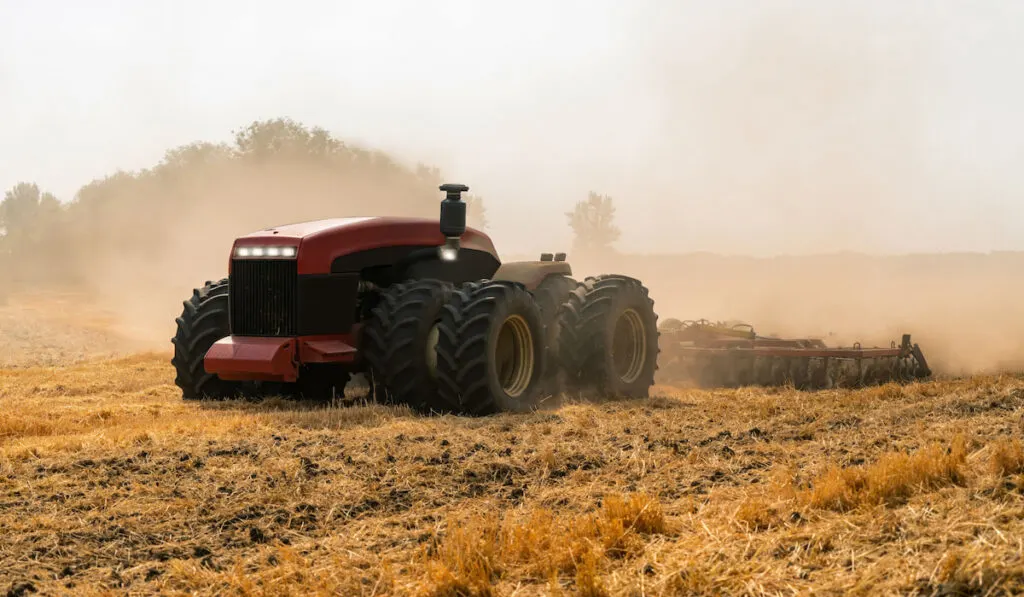
Farmers have driven tractors up and down pastures for decades to plant seeds, remove weeds, harvest corn, and push dirt. A farmer riding in a tractor is a classic American scene.
However, technology is improving, and now autonomous tractors are closer to reality than most people think. Even drivable tractors come with technology that lets the driver program a course, and the vehicle does the rest. Soon, you won’t need to be in the vehicle to complete the work.
Autonomous tractors use the latest GPS systems and computers to plan routes and handle routine farming tasks. As a result, drivers can control them remotely instead of manning them the entire time.
The prospect of autonomous tractors and other farming machines can reduce the long-term labor costs of running a farm, allowing its owners to get work done faster and save money. In addition, a single tractor operator can potentially control multiple tractors simultaneously.
Final Thoughts
There are a lot of different tractor models suitable for everyone, from a small homesteader to large commercial farmers. Which tractor you choose will depend on how much power you need and whether you do enough specialized work to warrant buying a specific type of tractor.
In most cases, farmers can get by with a versatile mid-range tractor that is compatible with the attachments they need. All it takes is a bit of work to switch implements, and you can use your tractor for anything you need on your farm.
Whether you’re digging holes or making crop rows, the tractor is bound to be a critical piece of farming equipment for years to come.
